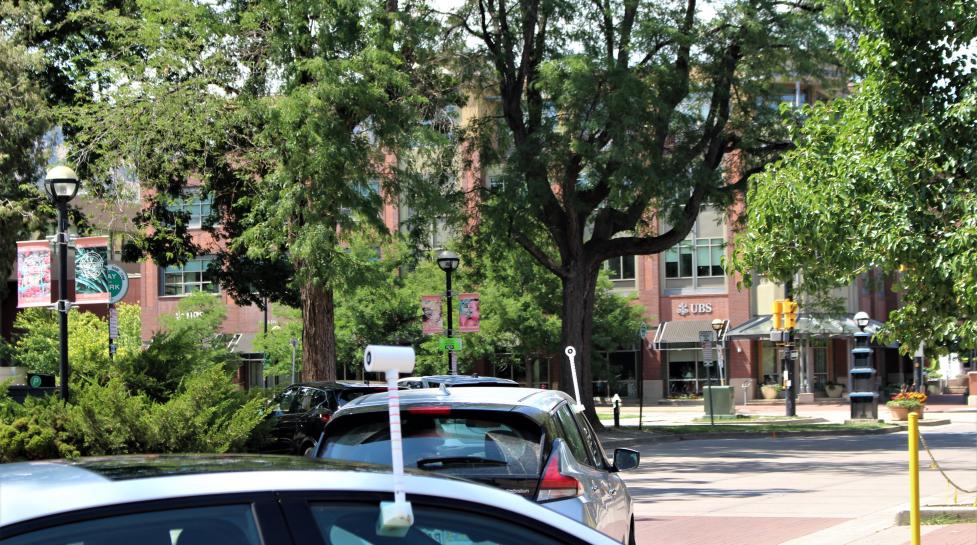Heat data shows where cooling solutions are most needed in Boulder
Heat data shows where cooling solutions are most needed in Boulder.
Heat data collected by community scientists this summer is now available online. The data is displayed in the form of a story map – a series of photos, text and interactive maps that narrate the volunteer-driven project and identify the hottest areas of Boulder.
Heat maps were created using temperature and humidity data collected by more than 70 volunteers who traversed neighborhoods throughout Boulder by car, bike and foot on one of the hottest days of the year. This effort was part of the NOAA Urban Heat Mapping Campaign, an initiative made possible by a partnership between the city, National Oceanic and Atmospheric Administration (NOAA) and CAPA Strategies.

Volunteers gather around the Cool Boulder tent to collect heat sensors.
Key findings from the data collection include:
- Areas with very little vegetation and a high proportion of impervious surfaces – such as roads and parking areas – were significantly hotter, as much as 17° F. According to NOAA, this represented one of the greatest heat ranges of all cities who participated in their study.
- Trees play a particularly big role in keeping Boulder’s neighborhoods cool. Residential areas with dense canopies seem to hold less heat throughout the day and densely vegetated areas, like those along Boulder Creek, cool adjacent neighborhoods.
- There are significant differences in tree canopy between neighborhoods in Boulder, resulting in higher risks of extreme heat exposure in some areas. Additional work is now underway to assess where these areas correspond to other heat-related risks, like lack of access to air conditioning.



These three maps by CAPA Strategies show how the distribution of heat changes throughout the day from morning to afternoon to evening.
Using the Data
These findings will help guide strategies that reduce unhealthy and deadly effects of extreme heat and help everyone in Boulder be more climate ready. Strategies include nature-based solutions that enhance shade and evaporative cooling, like expanding urban forests, and increasing access to high efficiency cooling systems for those most vulnerable to heat extremes.
More data analysis and details can be found in the Boulder Urban Heat Mapping story map.
“Now that we have a better picture of heat exposure across our city, we can begin focusing nature-based cooling strategies to protect and improve the lives of those most impacted by hot and dry weather. This data also illustrates the importance of a diverse, healthy and resilient urban landscape as we work to cool and protect our community.”
- Nature-Based Climate Solutions Team Lead Brett KenCairnGet Involved
Community members can get involved in these efforts by joining the Cool Boulder campaign.
